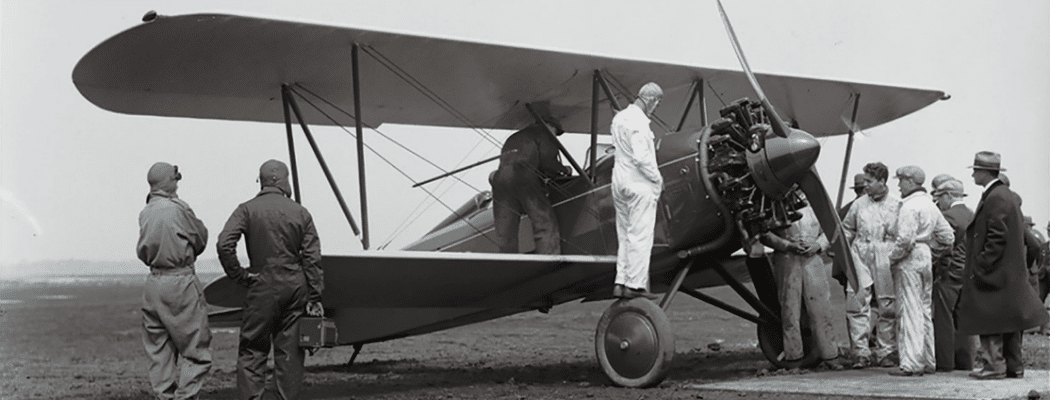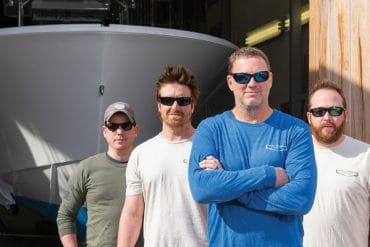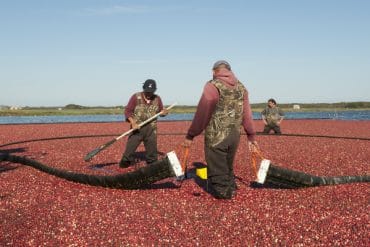How one of the greatest American pilots landed on Nantucket.
Late last fall, a single prop plane crashed on a makeshift runway on the island of Muskeget, west of Nantucket. Although the incident was kept out of the papers, many of those who caught wind of the story were surprised to learn that this tiny spit of sand even had a runway to begin with. Despite being entirely uninhabited, save for a rickety beach shack and thousands of gray seals, the “Muskeget Island Airport” is indeed registered with the Federal Aviation Administration and the International Air Transportation Association. Yet what makes this bumpy stretch of beach grass even more fascinating is the fact that it once belonged to one of the most storied aviators in American history.
 Today, more than two-thirds of Muskeget Island remain in the possession of Crocker Snow Jr., a former international correspondent for The Boston Globe and Newsweek who is also a featured author at this June’s virtual Nantucket Book Festival. Snow is the foremost expert on Muskeget, having written several books about the island’s unique ecology and history that has been sewn into his own family’s lore. He first sighted Muskeget from the co-pilot seat of his father’s single-engine plane in 1947. His father, Crocker Snow Sr., had managed to buy the island as a duck hunting retreat and created the airstrip that remains today. While owning an island might seem an extraordinary feat, it is but a minor footnote in a high-flying life of adventure that would land Crocker Snow Sr. in the annals of aviation history.
Today, more than two-thirds of Muskeget Island remain in the possession of Crocker Snow Jr., a former international correspondent for The Boston Globe and Newsweek who is also a featured author at this June’s virtual Nantucket Book Festival. Snow is the foremost expert on Muskeget, having written several books about the island’s unique ecology and history that has been sewn into his own family’s lore. He first sighted Muskeget from the co-pilot seat of his father’s single-engine plane in 1947. His father, Crocker Snow Sr., had managed to buy the island as a duck hunting retreat and created the airstrip that remains today. While owning an island might seem an extraordinary feat, it is but a minor footnote in a high-flying life of adventure that would land Crocker Snow Sr. in the annals of aviation history.
Born in Buzzards Bay a year after the Wright brothers made their first successful flight in Kitty Hawk, Snow Sr. had aviation in his blood. He grew up idolizing his older brothers, both of whom became pilots. His eldest brother, Bill, flew antisubmarine missions during World War I while his closest brother, Kick, served in the Air National Guard. Kick and Crocker built their own open-cockpit Avro biplane together, in which Crocker would sit co-pilot as Kick soared them over Massachusetts. But after Crocker went off to study law at Harvard, Kick tragically crashed and became the first fatality ever recorded at Logan Airport. With his idol gone, Crocker Snow dropped out of Harvard and pledged to fulfill his late brother’s dream of becoming a decorated aviator.
 After having his pilot’s license signed by none other than Orville Wright, Snow was quick to make a name for himself in aviation. He challenged a local newspaper—The Boston Traveler—$1,000 that he could teach two random people in a crowd to fly and land a plane in a single day—completely on their own. The Traveler took the bet and ran a promotion in the paper. Sure enough, Snow pulled a man and a woman out of the crowd gathered at a Massachusetts airfield and spent the day teaching them to fly. By late afternoon, he felt confident enough in the man’s abilities to send him up by himself. The man took off and landed without incident.
After having his pilot’s license signed by none other than Orville Wright, Snow was quick to make a name for himself in aviation. He challenged a local newspaper—The Boston Traveler—$1,000 that he could teach two random people in a crowd to fly and land a plane in a single day—completely on their own. The Traveler took the bet and ran a promotion in the paper. Sure enough, Snow pulled a man and a woman out of the crowd gathered at a Massachusetts airfield and spent the day teaching them to fly. By late afternoon, he felt confident enough in the man’s abilities to send him up by himself. The man took off and landed without incident.
Next came the woman. As the sun was setting over the airfield, she took off, performed a big arc across the horizon, and then made for the runway. Snow must have winced as the woman landed the plane with all the grace of a sack of potatoes—but she landed! The feat won him that $1,000 prize and local acclaim—but it wouldn’t be the last headline connected with his name.
As he soared over Massachusetts throughout the 1920s, Snow flew many passengers, but none became more famous than a social worker from Boston’s Denison House that he picked up one afternoon. Amelia Earhart asked Snow to fly her over the city to drop leaflets advertising a fundraiser she was promoting for the Denison House. He agreed and the next day Earhart’s name was plastered across The Boston Globe on account of her flight with Snow. Four years later, Earhart flew into the history books by becoming the first woman to complete a transatlantic flight. As for Snow, he went on to launch Massachusetts’ first commercial airline— Skyways—before being named the first director of aeronautics in Massachusetts in 1939. Then came World War II.

The mortality rate of the early B-29 bombers in World War II was horrific. Whether flying bombing missions or test flights, hundreds of pilots were killed in crashes every single day. What made the B-29 Superfortress so lethal, both to the enemies and pilots alike, was that it could climb to 31,000 feet where Japanese Zeroes couldn’t reach. Despite soaring at altitudes that required pilots to don oxygen masks, the B-29s could still theoretically drop bombs with astounding accuracy.
As a flight commander in the Air Force, Snow literally represented the tip of the spear on these bombing raids over Japan. With the fleet of B-29s off either wing, Snow piloted the lead plane taking off from Saipan in the Northern Mariana Islands. During one of these early raids, the American aces were targeting a ball-bearing factory south of Tokyo. When they got within a hundred miles of the target, Snow commanded his navigator to begin the bombing sequence, but they couldn’t get the bomb doors open. Confounded but undeterred, Snow looped the whole fleet around, descended to a lower altitude, and then manually dropped the bombs using dead reckoning. When they returned to the base to debrief, Snow and his team deduced why the bomb doors wouldn’t open. At that high altitude, they’d discovered a mysterious wind speed, which later became known as the jet stream.

Snow flew twenty bombing missions during World War II, but one in particular changed the course of humanity. Five teams of B-29s were selected for a covert mission designed to put an end to the war. While Snow’s team was ultimately not chosen to drop the atomic bomb on Nagasaki, he did accompany the bombardiers on that fateful flight, soaring behind them in a separate plane to provide protection. So it was that from the cockpit of his B-29 on August 9, 1945, Snow witnessed only the second atomic bomb in history to be dropped, killing upward of 80,000 people and forcing the Japanese to surrender.
When World War II came to an end, Snow returned to the family he had started before entering the service. He had met his future wife Janice Vaughan at a dinner party in Boston in 1936 and was immediately smitten. Janice was already married at the time, ironically to an aviator in England. She was in Massachusetts visiting her family in the North Shore, where she was born. Snow took her out on his plane two days after they met and a romance quickly ensued. When it came time for her to sail back to her husband waiting in England at the end of the summer, Snow agreed to fly her to Long Island where she would board the Queen Mary bound for the UK. As tugboats pulled the Queen Mary into the harbor, Snow soared his plane around the ship’s smokestacks and put on an air show for the ship’s passengers. Watching Snow wag his wings at her, Janice made a decision that would change the trajectory of her life. She spontaneously disembarked the Queen Mary onto one of the tugboats and never returned to her husband in England. Snow and Janice were married amid a flood of tabloids in 1938 and eventually had a son named after his father.

Crocker Jr. spent much of his childhood in the skies, flying with his father to the mountains of New Hampshire and the beaches of Cape Cod. The family settled in Ipswich, where Crocker helped his father plow an airstrip in their backyard registered with the FAA as Snow International Airport. “I was only in one pileup with him,” Crocker recalled. During the summers, Snow would load up his family to fly six minutes away to Cranes Beach where they would land on the sand. On one of their return flights, Snow put Janice on the controls. As he sorted things in the back of the plane, Snow told his wife to land. There was just one problem: She had forgotten to put the wheels down. The plane crashed in their backyard, resulting in a small fire, no injuries and the conclusion of Janice Snow’s flying career.
 When he and Janice first married, Snow had agreed to move to the North Shore of Massachusetts so long as he would someday buy a home in his native Cape Cod. When he went searching for that home on the Cape—usually by air—an unexpected location appeared on his radar. Snow was invited to go duck hunting by Alan Holdgate, who ran Nantucket Memorial Airport. Holdgate explained that they wouldn’t be hunting on Nantucket, but rather a much smaller island to the west that Snow had never heard of. After a thrilling day of shooting ducks on Muskeget, Snow thought the island would be the perfect retreat for his family and asked Holdgate who owned it. Holgate explained that three businessmen from Philadelphia did, but they would never sell it. Not one to take no for an answer, Snow started to scheme a way to buy the island.
When he and Janice first married, Snow had agreed to move to the North Shore of Massachusetts so long as he would someday buy a home in his native Cape Cod. When he went searching for that home on the Cape—usually by air—an unexpected location appeared on his radar. Snow was invited to go duck hunting by Alan Holdgate, who ran Nantucket Memorial Airport. Holdgate explained that they wouldn’t be hunting on Nantucket, but rather a much smaller island to the west that Snow had never heard of. After a thrilling day of shooting ducks on Muskeget, Snow thought the island would be the perfect retreat for his family and asked Holdgate who owned it. Holgate explained that three businessmen from Philadelphia did, but they would never sell it. Not one to take no for an answer, Snow started to scheme a way to buy the island.
Over the next six months, he made stop-offs in Philadelphia during his cross-country flights for the explicit purpose of taking Muskeget’s owners out to lunch. Dashing and charismatic, Snow built a rapport with the three businessmen, insisting that if they ever wanted to sell their island, he would gladly buy it from them. After their third lunch, the men started coming around. They eventually agreed to sell Muskeget to Snow for $12,000. Snow brought in two partners to split the cost of the island, agreeing that the last man alive would become its full owner. For the next fifty years, the Snows spent summers and almost every Thanksgiving on Muskeget.

moved further inland
Snow lived to be ninety-four years old. Flying to the very end, he had logged 15,000 hours in more than 140 types of aircraft, covering 900,000 miles. As for Muskeget, while the island has changed shape over the decades, with its sandy shores growing and retreating with each storm, the island will remain in the Snow family for as long as it’s above water. The forgotten airstrip continues to be a way point for pilots, one where only the most daring and skilled attempt to land.







